Yet More Data Analysis
With only 25 albums left on the Acclaimed Music list, the graphs come out.
(This email may get truncated because of the graphs.)
We are now up to 85 entries, numbers 100-26 from the Acclaimed Music list and ten free choices from myself. This is the third of four analysis pieces. The first came after the first 30, the second half through, and the final will arrive once the 100 is completed. Both those links contain explanations of some of the terms we will use in this analysis, so new readers may want to check those so we can dive straight in.
Release Date
So, as before, 1965-1969 has had the most entries, with the late eighties and early 1970s also on the podium. Post-2004 albums and early 80s records haven’t featured much, nor have records from before 1965.
But I have had a free selection as well as those entries, and as I’ve chosen one per decade, we would expect to see that in the data.
In 2023 with all free choices, I will expect some of the white space on the right-hand side to fill up, reflecting albums I experienced contemporaneously.
Length
We are starting to see a bit of a pattern now. Most album closers fall between three and seven minutes, with a few outliers coming in under two and a long tail stretching out beyond ten and towards 15 minutes. We can see that while three to minutes is widespread, the majority are above 4 minutes, and the average is now over five. John Lennon’s ‘My Mummy’s Dead’ remains the shortest.
Track Number
With a few more double albums from Prince, The Jimi Hendrix Experience and Stevie Wonder adding higher numbers, we still see that almost half the albums have 11 or 12 tracks. So, more evidence that, in general, we have a slightly longer length song than a single coming in as track 11 or 12. We don’t have enough granular detail to say if the track numbers are increasing and the songs are getting longer thanks to the changes in how music has moved from vinyl to CD to digital - but that will come.
We can also see a relationship between the number of songs and length, with close to half of the albums being in this rectangle.
So far, there is a weak relationship between length and track numbers; the longer songs tend to appear on albums with fewer songs (Kind of Blue, Marquee Moon) and the shorter ones on albums with many tracks (The Ramones). This makes sense, but long double albums throw a spanner in this relationship with more recording time.
Comparisons
Previously we have compared the last tracks with the first and most played tracks on Spotify - we have done that again, and now we have added UK #1s as a comparison.
There are over 1200 UK Number One singles included in this dataset, so we can be more confident that very short or very long songs, like Adam Faith’s ‘What Do You Want’ or Meatloaf’s ‘I Would Do Anything For Love (But I Won’t Do That)’ are outliers.
We can see from this one that it is rare for the album closer to be the most played song (Only ‘Glory Box’ and ‘Purple Rain’ manage that from 85 albums). Albums kicked off by the likes of ‘Seven Nation Army’, ‘Whole Lotta Love’ and ‘Gimme Shelter’ only have less popular songs to come.
For BPM, closers are slightly faster than openers, but not much is in it. They are also quicker than the number ones, which I found surprising. Number Ones have a far greater energy spread, from ‘Albatross’ to ‘Setting Sun’ and ‘Stand and Deliver’ at the extreme ends. Closers certainly have less energy than the chart toppers, the openers and the most popular songs.
The closing tracks are also less danceable, quieter and sadder as well as being more acoustic.
We are taking a week’s break before we return with Patti Smith and Arcade Fire.
See you in September.



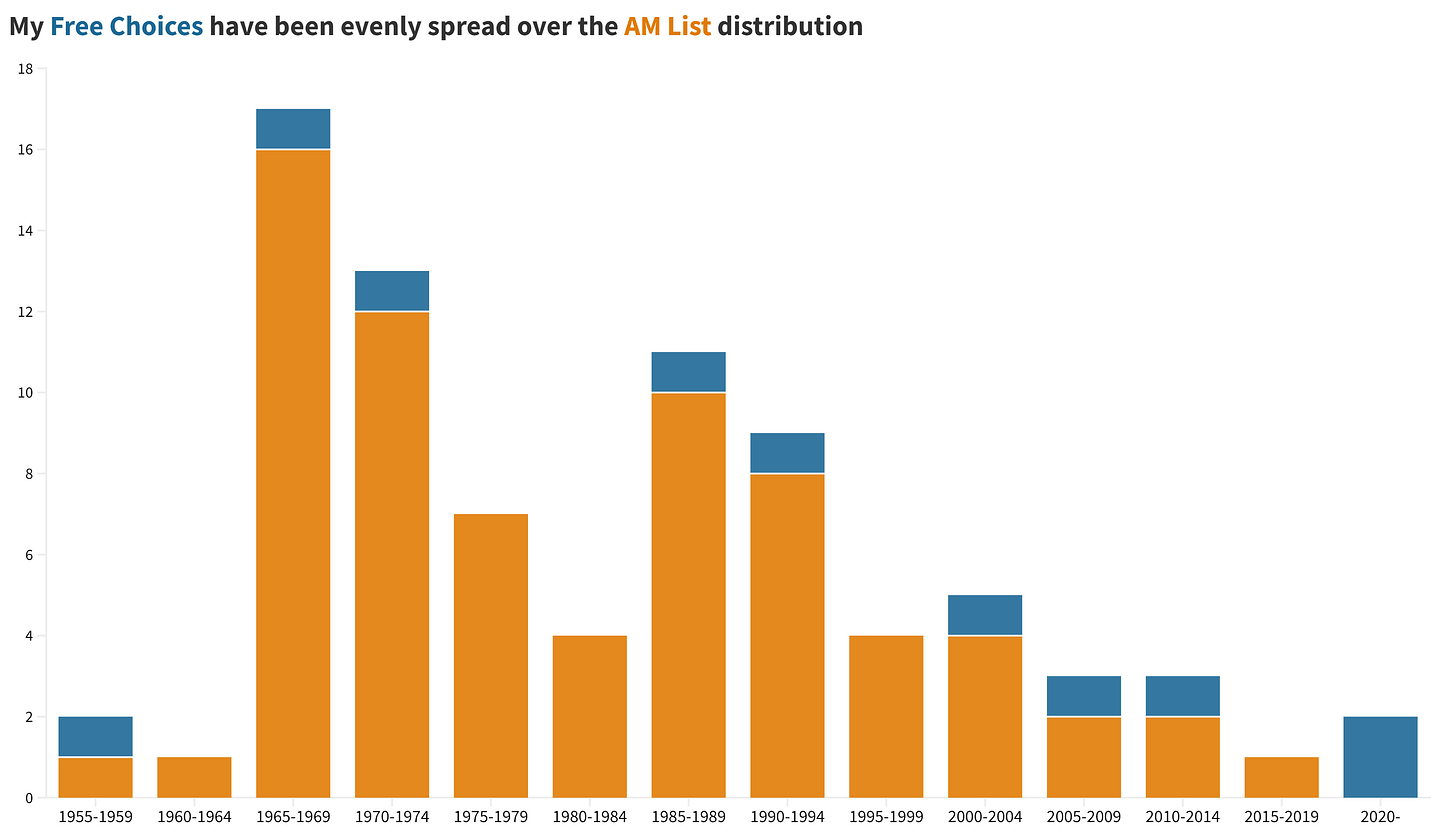
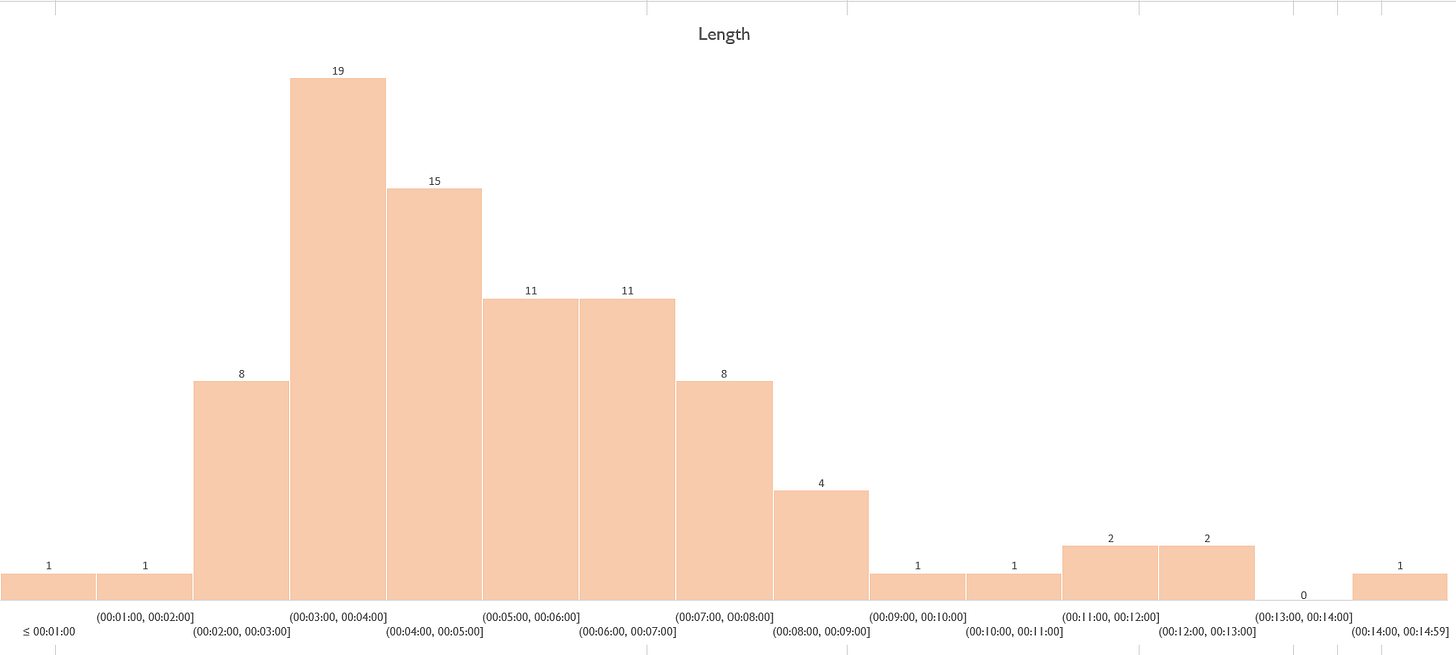

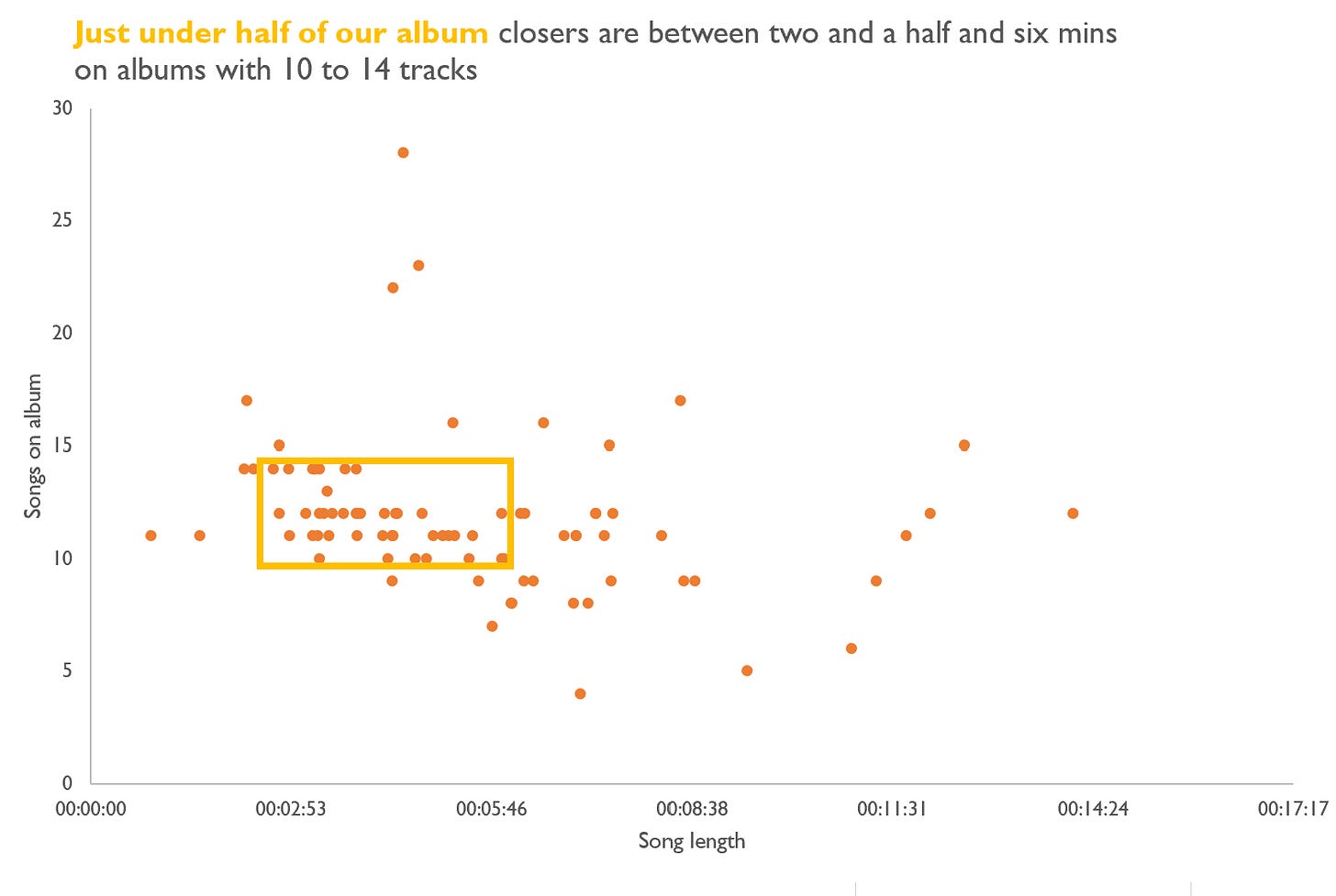
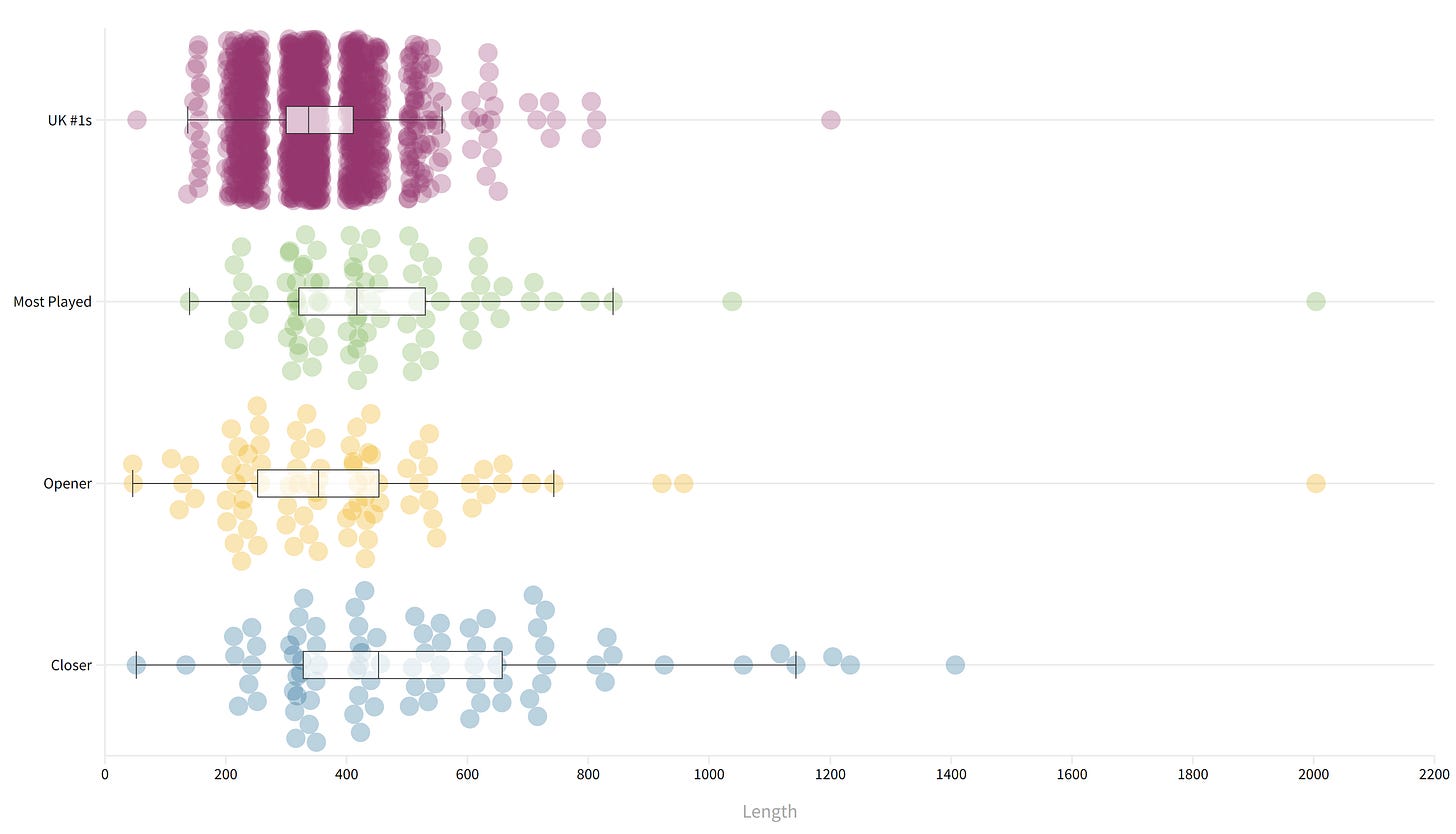
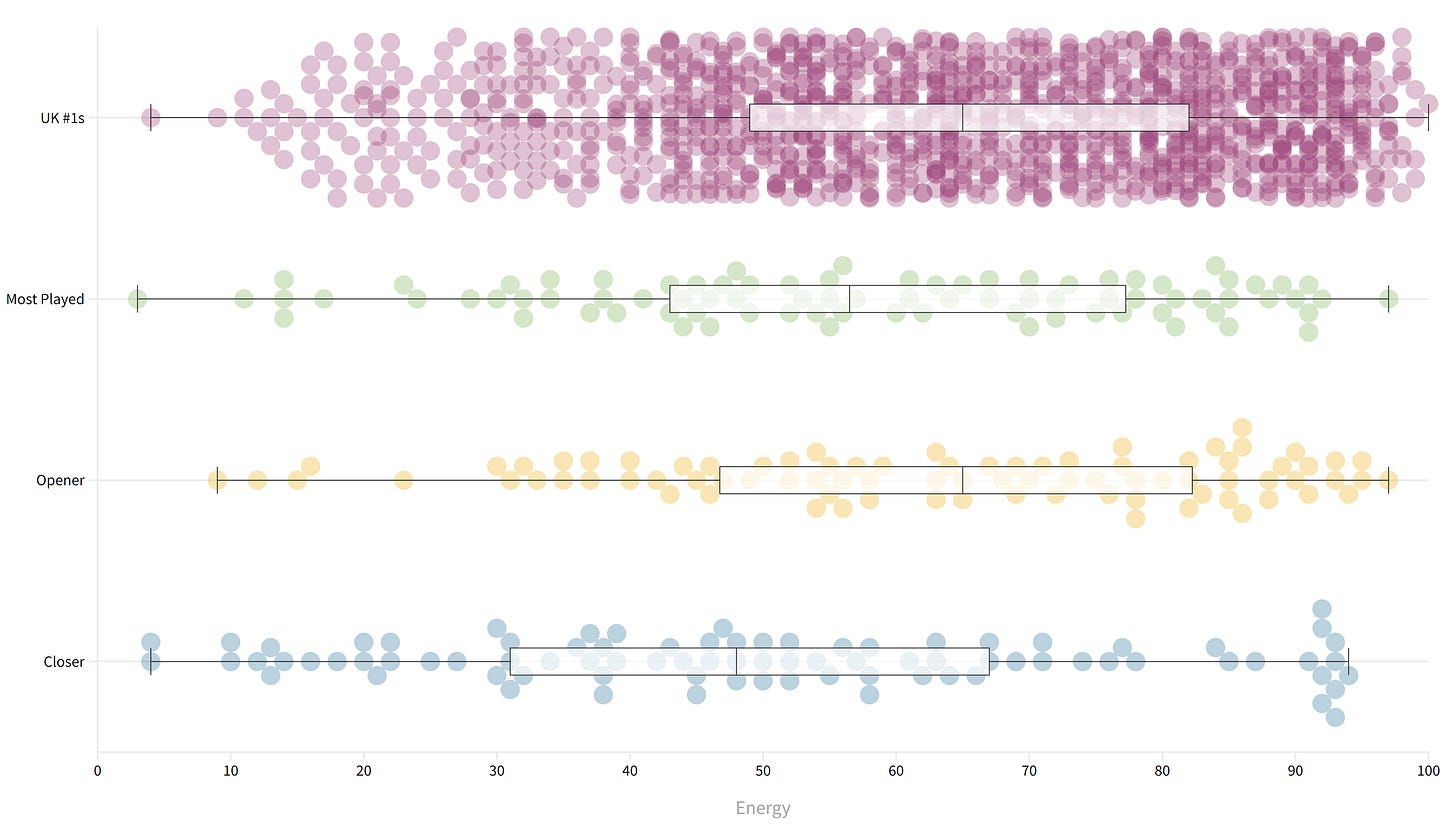
This is so cool!